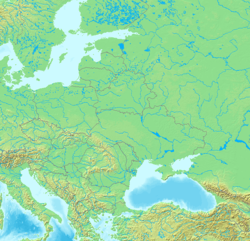Eastern Europe
| Eastern Europe | |
|---|---|
 Geographic features of Eastern Europe |
Eastern Europe, also known as East Europe, is the eastern part of the European continent. There is no consensus on the precise area it covers, partly because the term has a wide range of geopolitical, geographical, cultural, and socioeconomic connotations. There are "almost as many definitions of Eastern Europe as there are scholars of the region". A related United Nations paper adds that "every assessment of spatial identities is essentially a social and cultural construct".
One definition describes Eastern Europe as a cultural (and econo-cultural) entity: the region lying in Europe with main characteristics consisting in Byzantine, Orthodox, and some Turco-Islamic influences. Another definition was created during the Cold War and used more or less synonymously with the term Eastern Bloc. A similar definition names the formerly communist European states outside the Soviet Union as Eastern Europe. Historians and social scientists generally view such definitions as outdated or relegating, but they are still sometimes used for statistical purposes.
Several definitions of Eastern Europe exist today, but they often lack precision or are extremely general. These definitions vary both across cultures and among experts, even political scientists, recently becoming more and more imprecise.
The Ural Mountains, Ural River, and the Caucasus Mountains are the geographical land border of the eastern edge of Europe. In the west, however, the cultural and religious boundaries of "Eastern Europe" are subject to considerable overlap and, most importantly, have undergone historical fluctuations, which make a precise definition of the western boundaries of Eastern Europe and the geographical midpoint of Europe somewhat difficult.
...
Wikipedia
